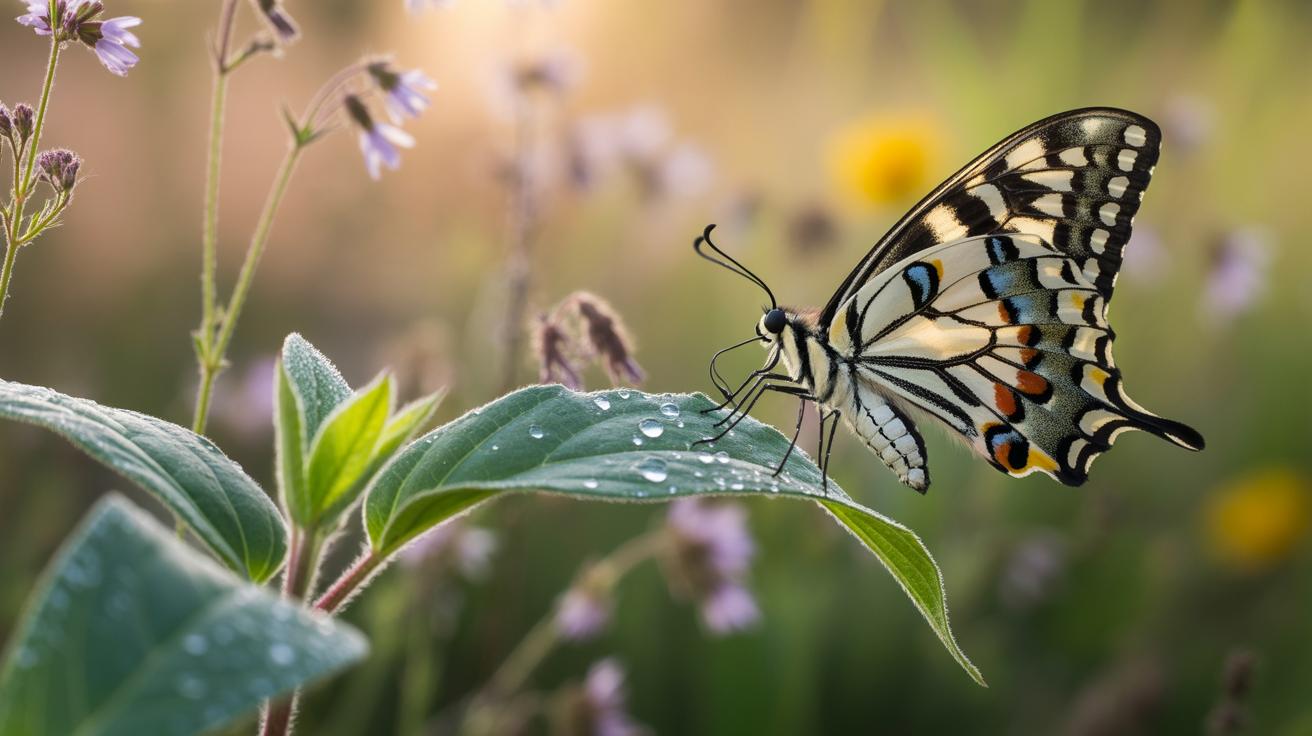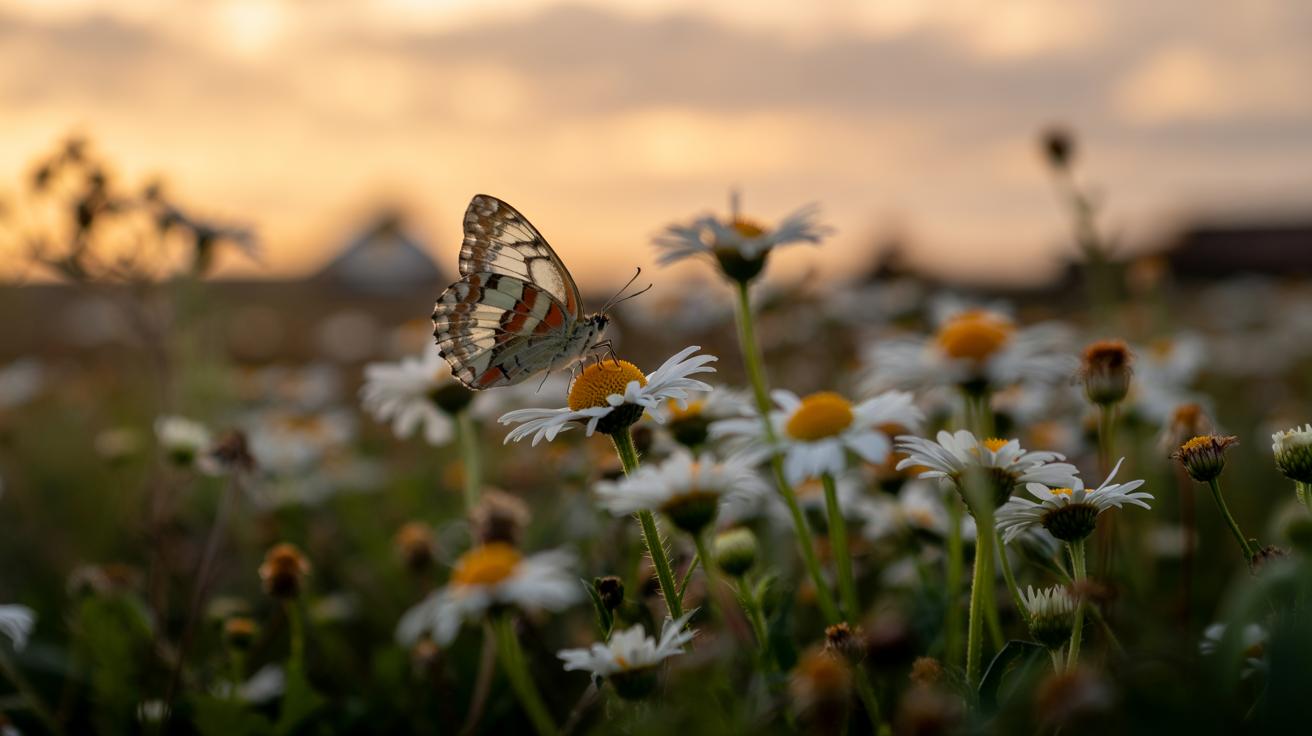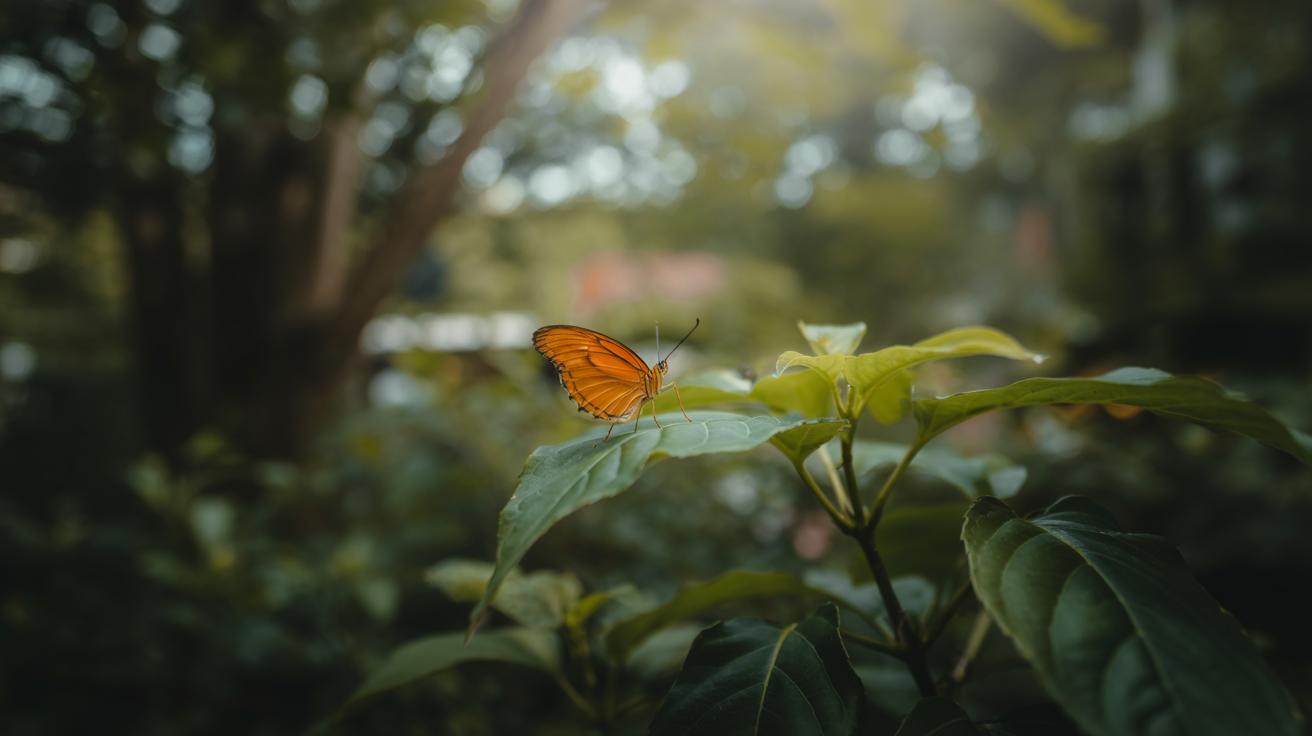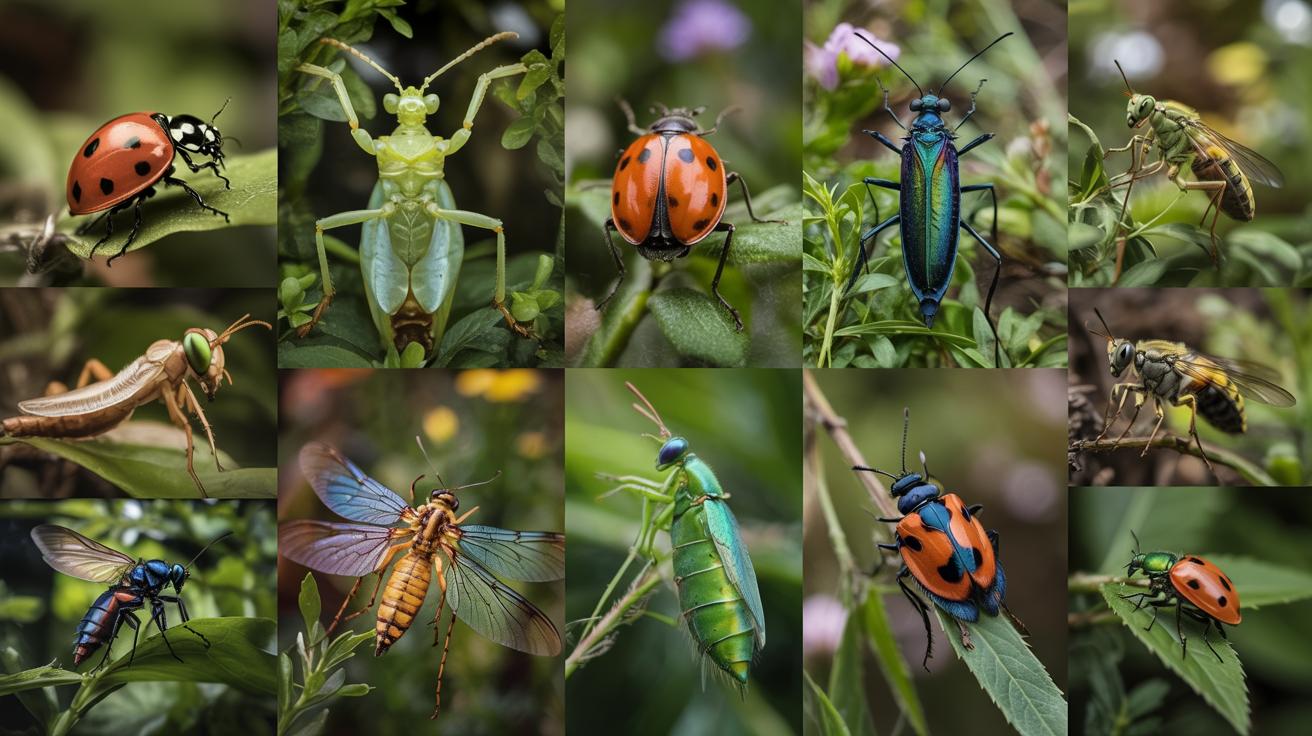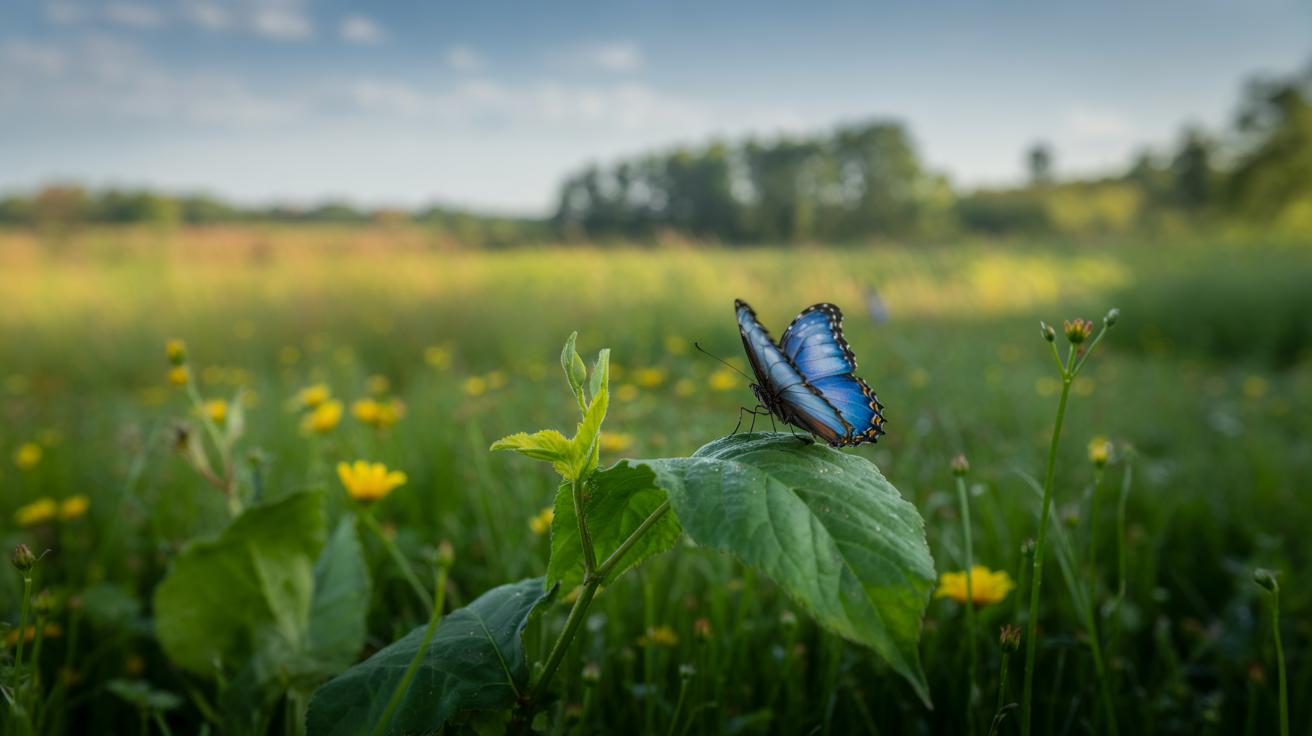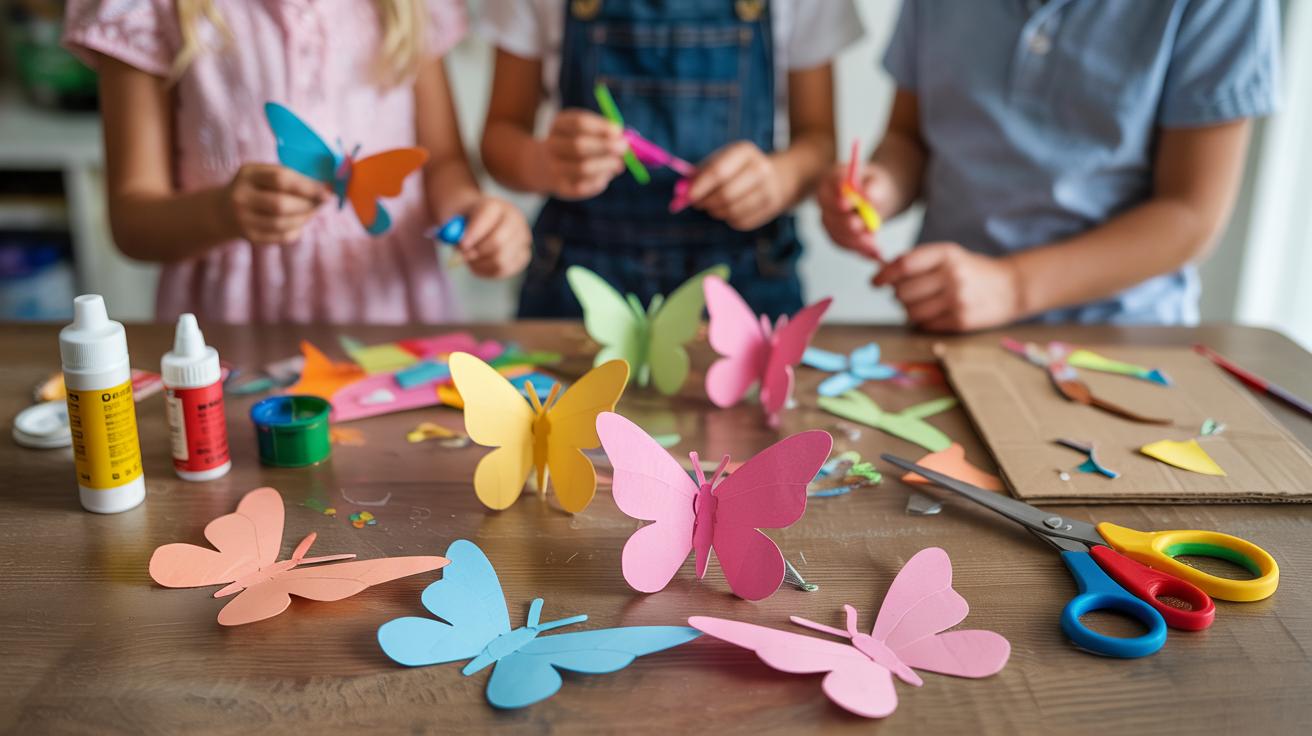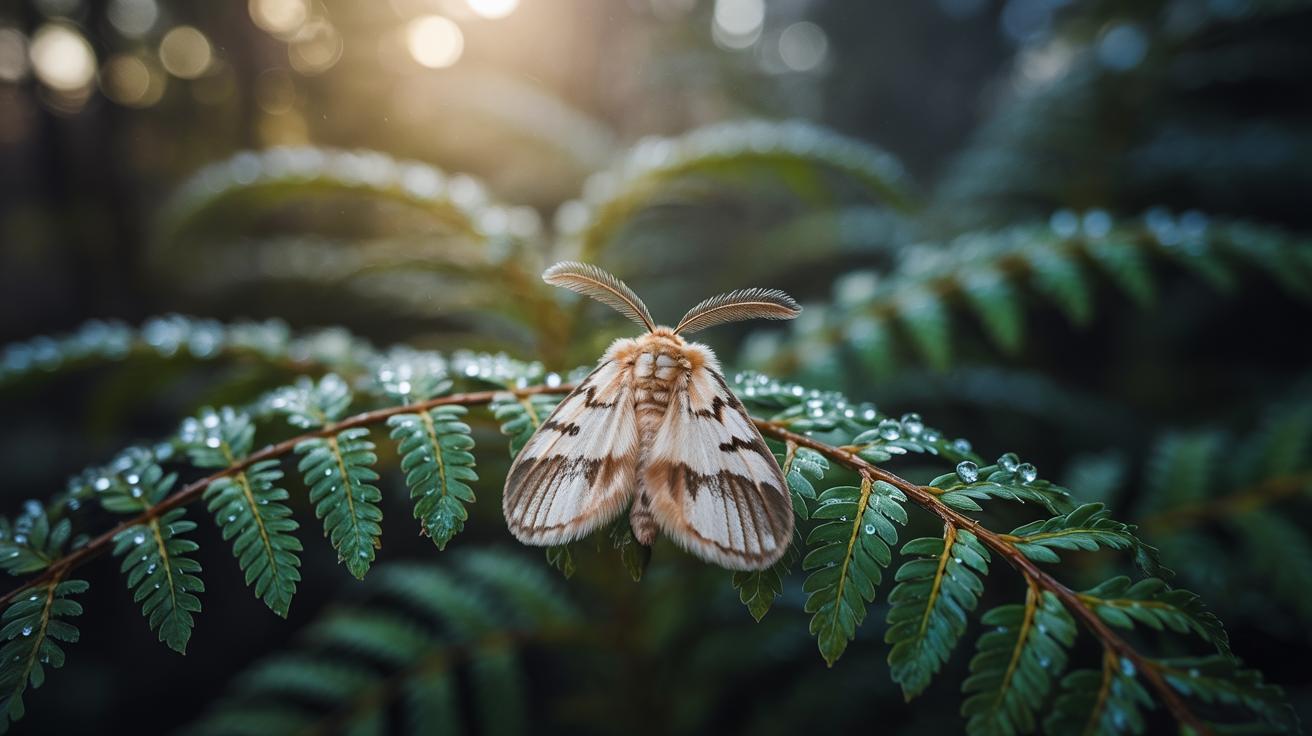Introduction
Swallowtail butterflies belong to the family Papilionidae. They are notable for their large size and bright colors. You can find them on every continent except Antarctica. There are over 550 different species of swallowtail butterflies. The name ‘swallowtail’ comes from the forked appearance of their hind wings, which resemble the tails of swallows. These butterflies also have unique caterpillars, which can release a strong smell when threatened to keep enemies away. Many species have striking wing patterns, which help protect them from predators through mimicry or camouflage.
Identifying a swallowtail butterfly can be interesting. You can recognize them by their distinctive tail-like wing extensions, size, and colors. These butterflies are mostly found in warm, tropical areas but some survive in colder climates like mountains. Knowing the features of swallowtails helps you enjoy and protect these beautiful creatures in your environment. This guide will help you identify the main types and learn about their behavior, habitat, and life cycle.
Classification and Taxonomy of Swallowtail Butterflies
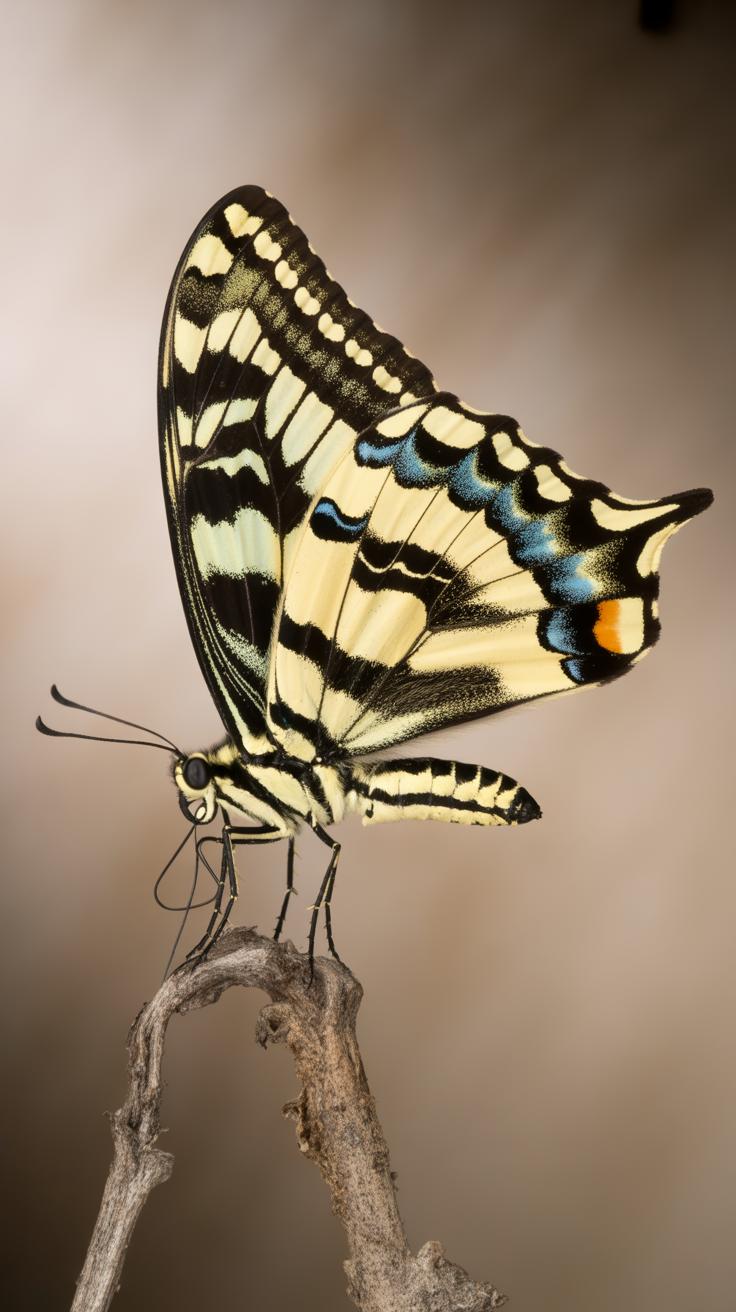
Family and Subfamily Overview
Swallowtail butterflies belong to the family Papilionidae, a group known for large, colorful butterflies. This family splits into three main subfamilies: Baroniinae, Parnassiinae, and Papilioninae. Each subfamily shows unique traits and occupies different parts of the world.
Baroniinae contains just one species, Baronia brevicornis. It displays primitive features compared to other swallowtails and lives only in limited areas of Mexico. Parnassiinae, often called Apollo butterflies, usually have pale wings with clear markings. They appear mostly in cold regions like the mountains of Europe and Asia.
Papilioninae holds the largest number of species. These butterflies often feature bright colors and the famous tail extensions on their hindwings. You can find them in various habitats worldwide, mainly in tropical and temperate zones.
Key Species and Their Distribution
The Baroniinae subfamily has its key species, Baronia brevicornis, restricted to southwestern Mexico. It favors dry forests and thorny bushes. Parnassiinae includes notable species like the Mountain Apollo (Parnassius apollo), which lives in the European Alps and other mountain ranges.
Among the Papilioninae, the Eastern Tiger Swallowtail (Papilio glaucus) is common in eastern North America. You’ll also find the Chinese Peacock (Papilio bianor) in East Asia and the Old World Swallowtail (Papilio machaon), which spans Europe, Asia, and North Africa. These species often stand out thanks to their color and size differences.
Do you wonder how these butterflies adapted to such varied climates? Observing their habitats could give clues about their evolutionary paths.
Distinctive Features of the Swallowtail Butterfly
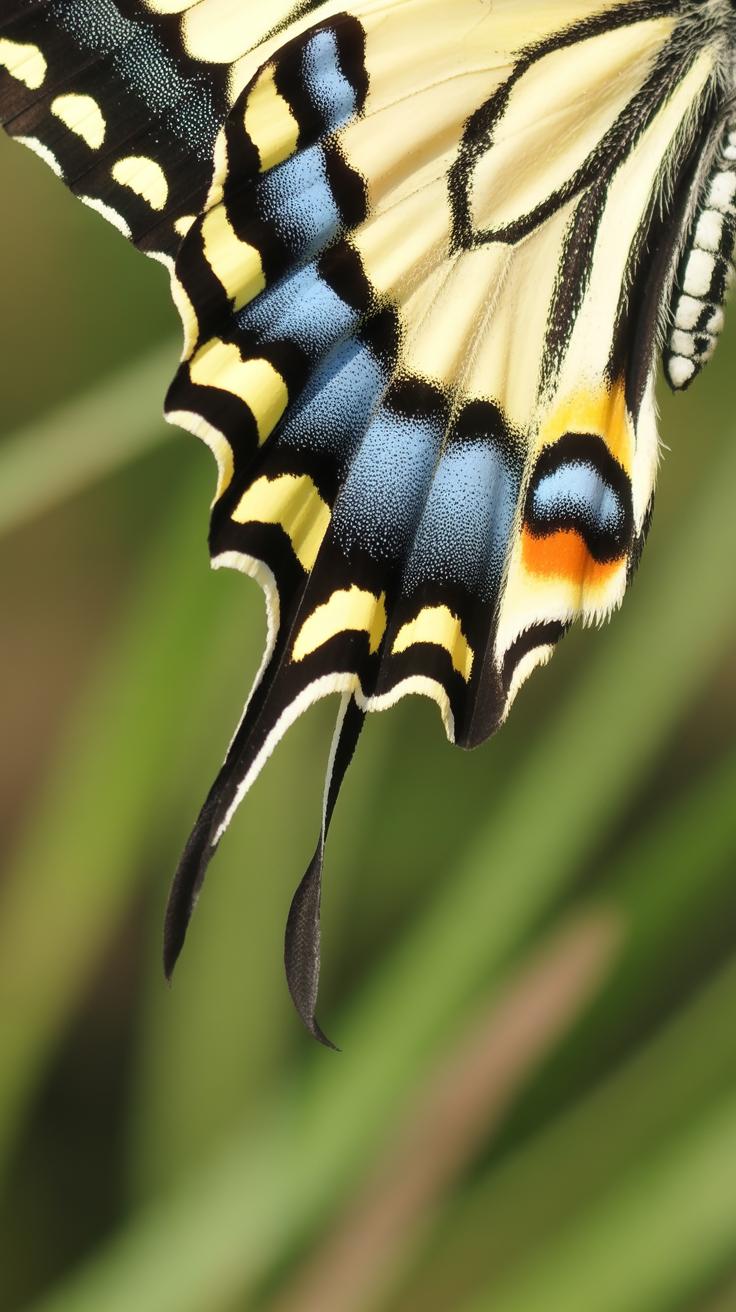
Swallowtail butterflies are easy to identify when you focus on their unique physical features. Their wings are large and broad, often spanning 3 to 6 inches depending on the species. The most eye-catching characteristic is the tail-like extensions on their hindwings. These tails vary in length and shape but tend to resemble small, pointed “tails” that give the butterflies their name.
The wing edges are usually smooth and rounded, except for those tail extensions which stick out clearly. When you spot a butterfly with these distinct tails, there’s a good chance you are seeing a swallowtail.
Look closely at the hindwings, because these tails can also differ in color or pattern from the main wing, making them stand out more. The size and presence of these tails not only make swallowtails unique but also help them confuse predators during flight. Have you noticed these tail shapes when observing butterflies in your local garden?
Wing Shape and Size
Swallowtail wings typically have a rounded forewing and a hindwing that flares out before tapering to a narrow tail. This shape offers them strong flight abilities and better maneuverability. Wingspan usually ranges from 3 to 6 inches, though some species can have even larger wings.
The hindwing tail extensions look like thin, elongated projections extending from the wings’ lower edges. These tails are usually not more than 1 to 1.5 inches long. In some species like the Old World Swallowtail (Papilio machaon), the tails are more pronounced and sharply pointed, while in others, they are shorter and blunt.
When you see a butterfly fluttering its wings with long tails trailing behind, you can guess it belongs to the swallowtail group. Do you think these tails could serve a practical purpose beyond identification?
Color Patterns and Markings
Swallowtail butterflies show varied but distinct color patterns that help them survive. Many have a base color of yellow, black, or blue, often with striking bands or spots. For example, the Eastern Tiger Swallowtail has bright yellow wings with bold black tiger stripes.
Color spots and bands not only attract mates but also confuse predators. Some swallowtails mimic toxic species, using bright patches to signal danger despite being harmless. Others blend well with their surroundings, using mottled colors for camouflage during rest.
Patterns on their wings can also include eye spots near the tails, which might draw attacks away from the butterfly’s body. As you observe swallowtails, ask yourself which colors and patterns seem protective and which appear designed for display?
Swallowtail Caterpillars and Defense Mechanisms
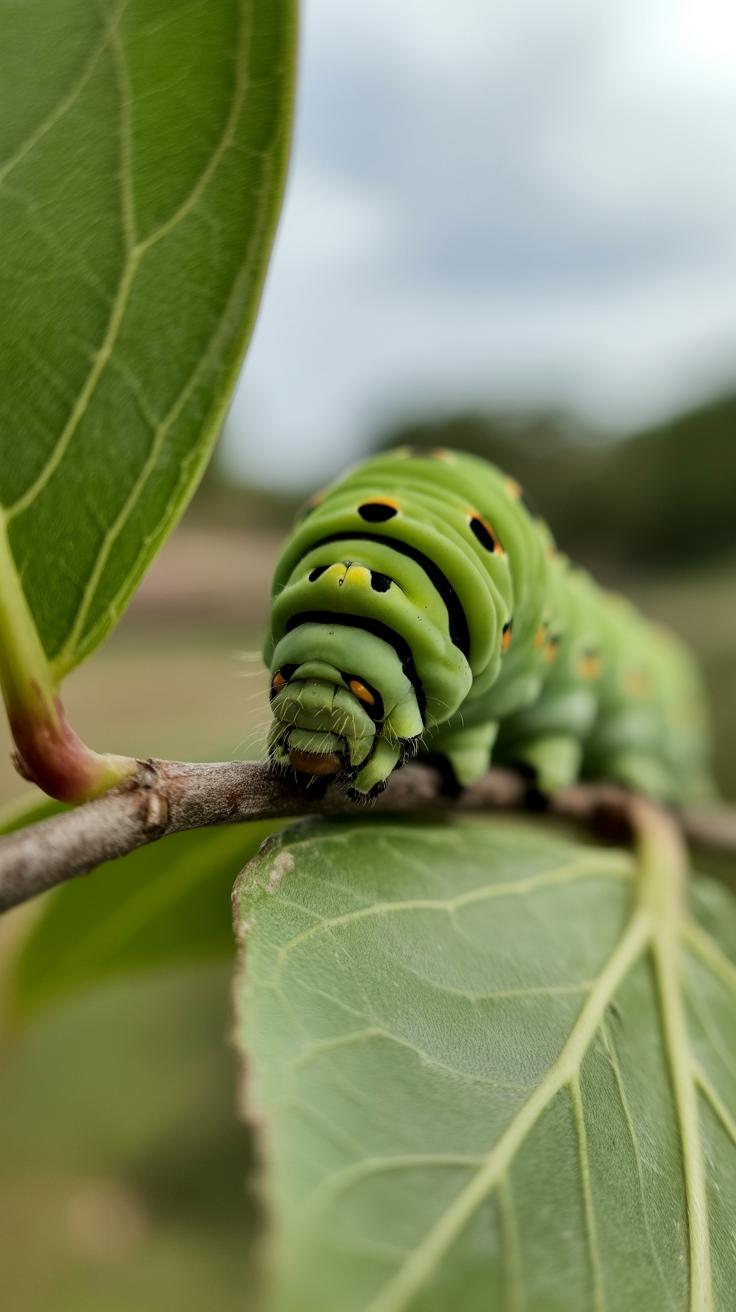
Swallowtail caterpillars show unique ways to protect themselves from predators during their vulnerable stage. One of their most notable features is the osmeterium, an organ they use to ward off enemies. When threatened, the caterpillar sticks out this forked, orange structure from behind its head. It quickly releases a strong smell that smells bad to birds and other attackers, making them think twice before biting.
The appearance of swallowtail caterpillars changes dramatically as they grow. Young caterpillars often look like bird droppings with white and brown patches, which helps them blend into their surroundings and avoid attention. As they mature, many become bright green with eye-like spots, which can scare off predators by resembling larger animals or signaling they might taste bad. These changes provide different types of protection throughout the caterpillar’s development.
Osmeterium Function
The osmeterium is a special defense organ found in swallowtail caterpillars. It lies hidden behind the head and only pops out when the caterpillar feels threatened. This organ releases a sharp, unpleasant odor that confuses or repels predators. When you see a caterpillar suddenly extending a sticky, orange fork, it’s trying to scare away danger.
Swallowtail larvae use the osmeterium mostly when predators come close or try to bite them. It isn’t a constant defense but an emergency tool. The smell comes from chemicals inside the organ which many predators find offensive. This leads to moments when the caterpillar gains enough time to escape or avoid harm.
Caterpillar Color Changes
Young swallowtail caterpillars often look like bird droppings with black and white patches. This helps them stay unnoticed in leaves and twigs. As they grow, their colors shift to a bright green with large spots that look like eyes on their body. These eye spots make birds hesitate by making the caterpillar seem bigger or dangerous.
Why does this color change matter? It provides protection at different growth stages. Early on, blending in helps avoid detection. Later, looking threatening or unappetizing keeps predators away even when the caterpillar is more visible. Watching these changes lets you identify the caterpillar’s age and understand how it defends itself in the wild.
Life Cycle and Metamorphosis
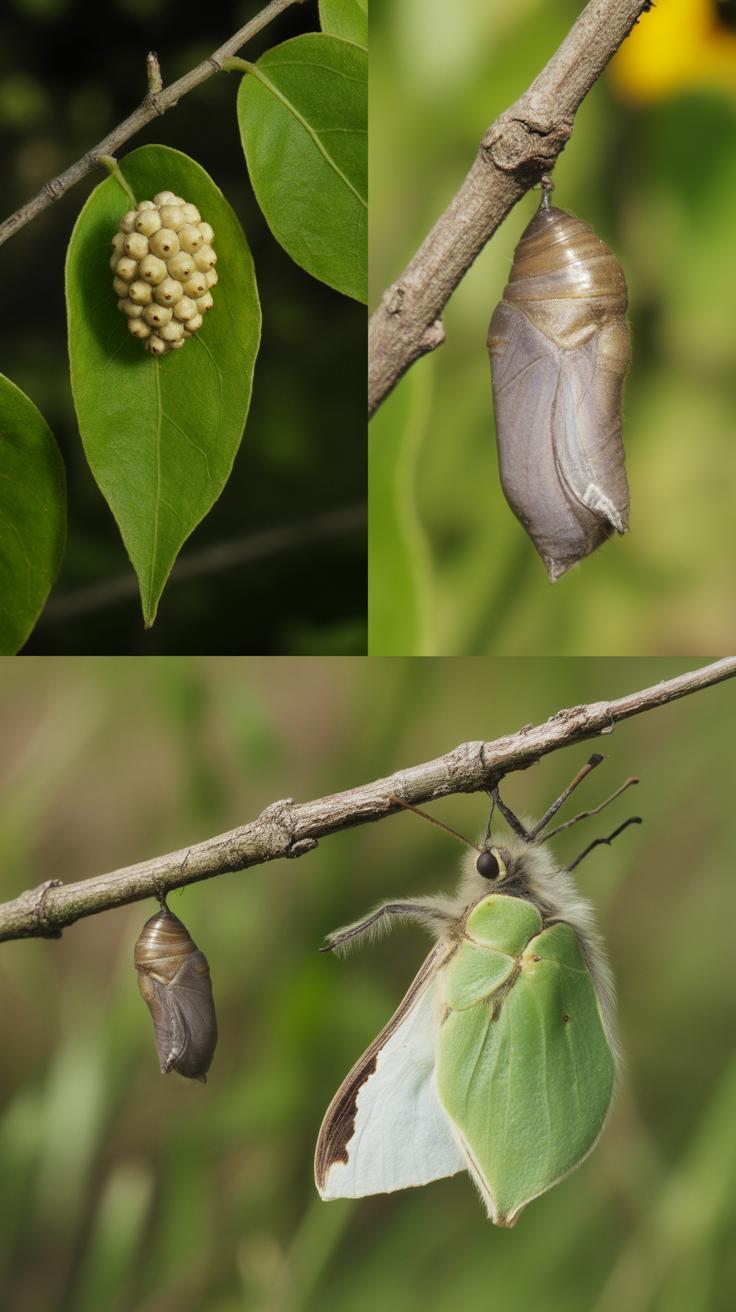
The swallowtail butterfly goes through four main stages: egg, larva, pupa, and adult. Each stage shows a different form and behavior. Understanding these stages helps you identify swallowtails at every phase of their life.
Eggs usually sit on the leaves of host plants. They hatch into caterpillars, which grow quickly and change appearance as they molt. Some species have caterpillars that mimic bird droppings in early stages, while others show bright colors to warn predators. The larval stage can last weeks, depending on the species and environment.
Once mature, the caterpillar forms a chrysalis, or pupa. This stage varies in color and texture among species, often matching nearby plants or bark. The adult swallowtail then breaks free from the chrysalis, ready to take flight. Timing for emergence depends on temperature and season, affecting the butterfly’s lifecycle length. How might the environment where you spot a swallowtail influence the timing of its metamorphosis?
Egg and Larva Stages
Swallowtail eggs are small and round or oval, often pale green or yellow. They cling firmly to the underside of host plant leaves for protection. Sometimes you can find eggs laid singly, but some species cluster them in small groups.
When caterpillars hatch, they look very different from adults. Early larvae might look like tiny bird droppings, helping them avoid predators. As they grow, caterpillars develop smooth or spiny bodies with changing colors, depending on the species. These color shifts can include green, brown, or even black to blend into their surroundings.
Pupa and Adult Emergence
The chrysalis shape and color vary greatly among swallowtail species. Some look like smooth green pods, while others mimic dried leaves with brown and gold hues. This camouflage protects them during the vulnerable pupal stage.
Inside the chrysalis, dramatic changes occur. After several days or weeks, the butterfly pushes out of the pupal case. When it first emerges, wings are soft and folded. The butterfly pumps fluid into its wings to stretch them before flight. Timing of emergence often aligns with the best weather conditions for survival. Have you ever observed a butterfly emerging from its chrysalis? Recognizing these details may deepen your appreciation for swallowtail butterflies.
Habitat and Geographic Range
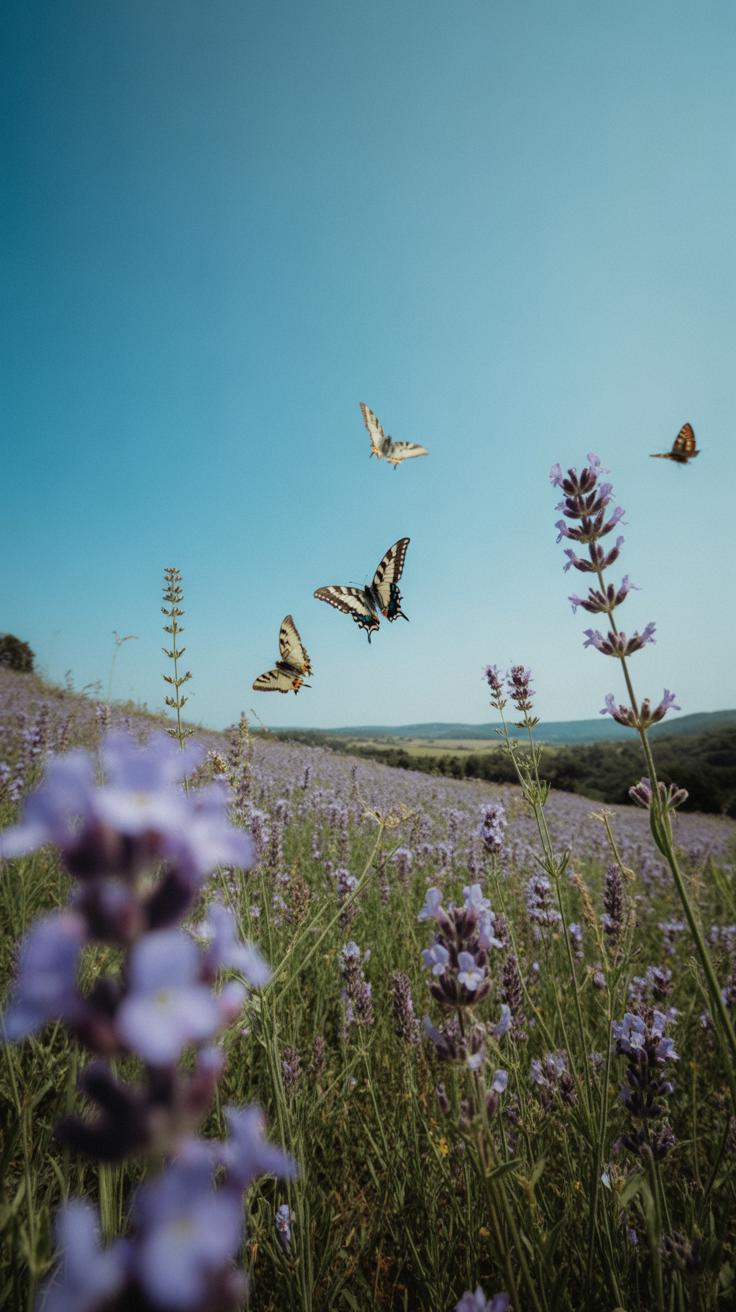
Preferred Habitats
Swallowtail butterflies thrive in a variety of environments, but they often choose places that provide both food and shelter. You’ll find them in open meadows, forest edges, riverbanks, and gardens where host plants are plentiful. These butterflies need spots rich in nectar sources for adults and specific plants for their larvae. For example, the Eastern Tiger Swallowtail prefers deciduous woodlands and nearby open spaces, while the Old World Swallowtail often favors alpine meadows and grassy hills.
When looking for swallowtails, check areas with plenty of flowering plants and leafy shrubs. These spots offer protection from wind and predators too. Does your backyard or local park have clusters of wildflowers or trees? Swallowtails might visit these areas regularly for feeding and laying eggs.
Geographic Distribution
Swallowtail butterflies live on almost every continent except Antarctica. North America hosts species like the Black Swallowtail and Eastern Tiger Swallowtail. Europe has the Old World Swallowtail, while Asia is home to the Peacock and Chinese Swallowtails. Africa features unique species such as the African Giant Swallowtail. You can spot some swallowtails in Australia and South America as well.
Their presence depends on climate and suitable plants. Tropical species stay close to rainforests and warm habitats, while temperate swallowtails adapt to cooler forests and grasslands. How far could you travel to see a swallowtail butterfly in your region? Knowing their distribution helps you predict where to find these striking insects throughout the year.
Diet and Host Plants

The diet of swallowtail butterflies changes as they grow. Caterpillars mostly eat leaves. They need specific plants to grow strong before turning into butterflies. Swallowtail larvae prefer plants from families like Rutaceae, Apiaceae, and Lauraceae. These plants provide the right nutrients and chemicals that help caterpillars avoid predators. For example, the Eastern Tiger Swallowtail caterpillars feed on tulip trees and wild cherry leaves. Understanding these host plants is key if you want to spot larvae in nature or raise them safely at home.
Adult swallowtail butterflies depend on nectar for energy. They use their long proboscis to access nectar deep inside flowers. Common nectar sources include milkweed, thistles, clover, and butterfly bush. These flowers supply sugar needed for flight, mating, and egg-laying activities. You might notice swallowtails visiting gardens or wildflower fields during the day, always seeking fresh nectar. Observing where these butterflies feed helps in creating supportive habitats and keeping them healthy.
Larval Host Plants
Swallowtail caterpillars rely on certain plants to thrive. Many species prefer plants in the parsley or citrus families. For instance, the Black Swallowtail caterpillar feeds on parsley, dill, and fennel. The Giant Swallowtail targets citrus trees such as orange or lemon. Host plants also influence where butterflies lay eggs. Without these specific plants, larvae cannot survive or grow properly. Have you seen a swallowtail laying eggs on a rue bush or a carrot plant? Noticing this helps you understand their life cycle and the role of your garden or local ecosystem.
These plants also play a role in swallowtail survival beyond food. Some host plants contain chemicals that make caterpillars less tasty to predators. Recognizing the plants your local swallowtails use can guide planting choices for butterfly-friendly habitats or conservation efforts. You can ask yourself, which plants attract the most caterpillars in your area?
Adult Butterfly Feeding
Swallowtail butterflies need nectar to fuel their daily activities. They visit a variety of flowers, especially those with wide or tubular shapes. Lilies, coneflowers, and lantana often attract these butterflies. The butterfly’s long tongue reaches into the flowers to collect nectar, giving it energy to fly and reproduce.
Finding reliable nectar sources is vital for their survival, especially during long flights or breeding seasons. Some swallowtails even prefer certain flowers, like the Pipevine Swallowtail, which often feeds on lantana and milkweed. For butterfly watchers, planting these flowers can increase your chances of seeing these butterflies up close. Have you ever wondered why some flowers attract butterflies but others don’t? Nectar quality and flower shape often explain this preference.
Feeding habits also connect swallowtails to their ecosystem. By visiting flowers, they help pollinate plants and support biodiversity around you. Your garden can be more than a home to butterflies; it can be a source of life for many species.
Mimicry and Survival Strategies

Swallowtail butterflies use mimicry to protect themselves from predators. Some swallowtails copy the look of toxic butterflies to avoid being eaten. This form of mimicry tricks predators into thinking the swallowtail is harmful or tastes bad. When you watch these butterflies, notice how harmless species adopt warning colors and patterns of poisonous species in their habitats.
Batesian mimicry occurs when a harmless butterfly copies a harmful one. Swallowtails often use this strategy to reduce risk. For example, the female West Coast Swallowtail mimics the pipevine swallowtail, a toxic species. Predators avoid both because they confuse the two. This survival strategy helps swallowtails thrive despite physical vulnerability.
You might wonder if this mimicry is perfect or just good enough. Even small mistakes can mean the difference between life and death for a swallowtail. What do you think predators learn from these patterns? Observing these strategies teaches you how nature balances risk and safety through clever disguise.
Types of Mimicry
Batesian mimicry stands out among the mimicry types swallowtails use. This type involves harmless swallowtails copying toxic butterflies to discourage predators. But mimicry isn’t limited to visual copies. Some swallowtails also use behavioral mimicry, imitating the flight or resting posture of toxic species.
Müllerian mimicry is another form, where two or more toxic species resemble each other, reinforcing predator avoidance. Some swallowtails participate in this pattern when they share habitats with genuinely toxic butterflies. Understanding these forms gives you clues about why certain patterns evolve in swallowtails.
Have you noticed how mimicry types vary by region? This variation reflects predator pressures and species diversity. Paying attention to these details can improve your identification skills and deepen your knowledge of butterfly survival techniques.
Examples of Mimic Species
The female Eastern Tiger Swallowtail sometimes mimics the Pipevine Swallowtail’s dark coloration. This mimicry helps her avoid birds that have learned the pipevine’s bad taste. Another example is the Spicebush Swallowtail, which mimics the toxic Pipevine Swallowtail’s blue hindwing spots and slow, floating flight.
In the tropics, the Common Mormon swallowtail mimics several toxic butterflies depending on its local subspecies. By adapting its appearance, it gains protection from predators unfamiliar with the harmless form. These examples show how mimicry has practical survival value.
When you spot a swallowtail, ask yourself if it might be a mimic. Thinking this way reveals how nature works to keep each species safe. Which swallowtail mimics surprised you the most? Recognizing these patterns adds new depth to your butterfly watching experience.
How to Identify Swallowtail Butterflies in the Wild
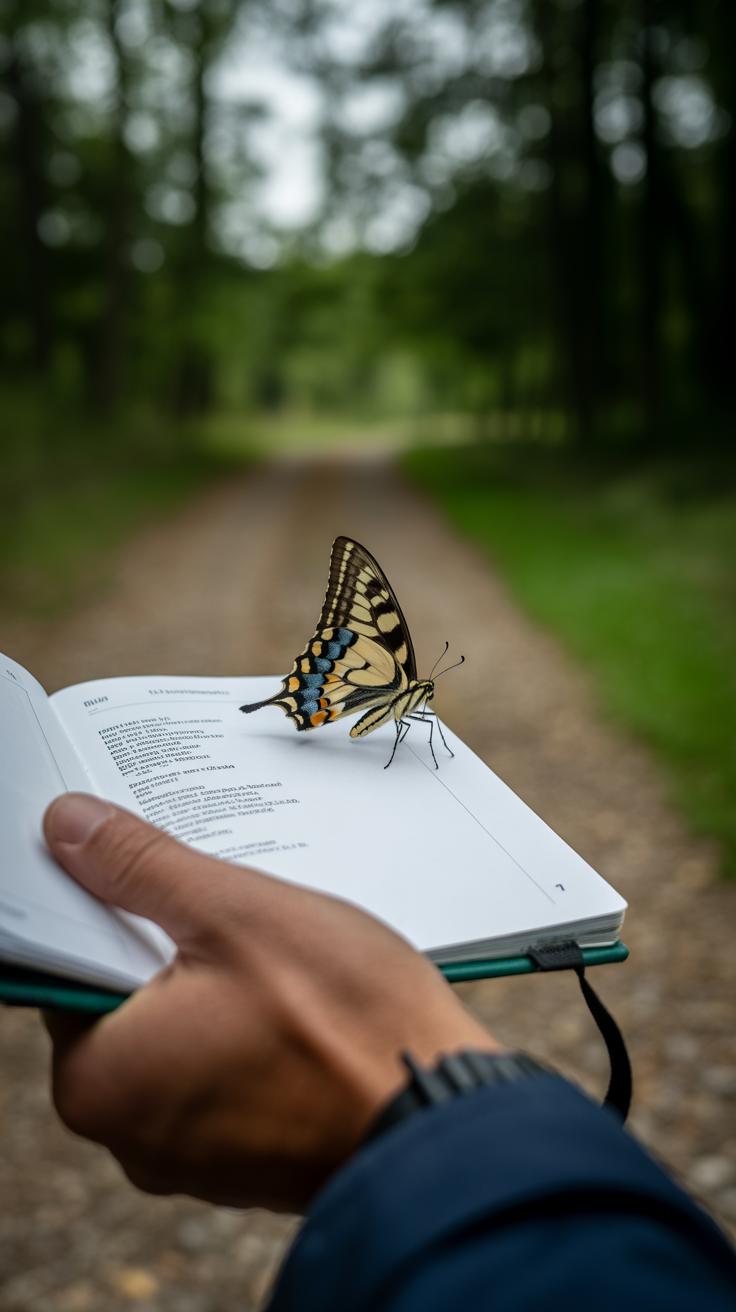
When you are outdoors, spotting swallowtail butterflies can be rewarding. Watch for their large wings, which often have distinctive tails resembling a swallow’s tail. These tails vary by species but usually curve or end in points. Their colors range from bright yellows and blues to blacks and greens. Look closely for patterns of stripes, spots, or eye-like markings that stand out on their wings.
Knowing common species in your region helps. In North America, you might see the Eastern Tiger Swallowtail with black stripes on yellow wings. On the West Coast, the Anise Swallowtail shows greenish wings with black lines. In Europe, the Old World Swallowtail has a yellow background with blue accents near the tails. Can you spot the unique features that distinguish these species?
Swallowtails often visit flowers in sunny, open spaces like meadows, gardens, and forest edges. Their presence near host plants, such as citrus trees or parsley, also gives clues about their identity. Paying attention to where you find them boosts your success in identification.
Visual Identification Tips
Concentrate on wing shape and markings for quick recognition. Swallowtails have wider wings than most butterflies, with a characteristic tail extension on the hind wing. The tails are slim and taper to points, a helpful visual marker.
Colors help too. Many swallowtails exhibit bold contrasts—yellow paired with black stripes, blue spots near the tails, or red spots near the edges. Look for these details in natural light where colors appear brightest.
Examine the wing edges. Some species have scalloped edges or small “eyes” that deter predators. These features stand out even from a distance. Can you spot these shapes and patterns in your next encounter?
Behavioral Clues
Swallowtail butterflies tend to have slow, graceful flight, often gliding smoothly between flutters. They hover over flowers before landing, making it easier to observe their wing patterns. Watching this behavior can confirm your identification.
They often feed on nectar from flowers like milkweed, thistle, or lavender. Notice how they use their long proboscis to reach deep into flowers. This feeding habit occurs mainly during warm, sunny hours when they are most active.
Swallowtails also frequently bask by spreading their wings flat in sunlight to warm up. If you observe this posture, it offers a great chance to note wing patterns in detail. What behaviors do you notice that help you tell swallowtails apart from other butterflies?
Conservation and Importance of Swallowtail Butterflies
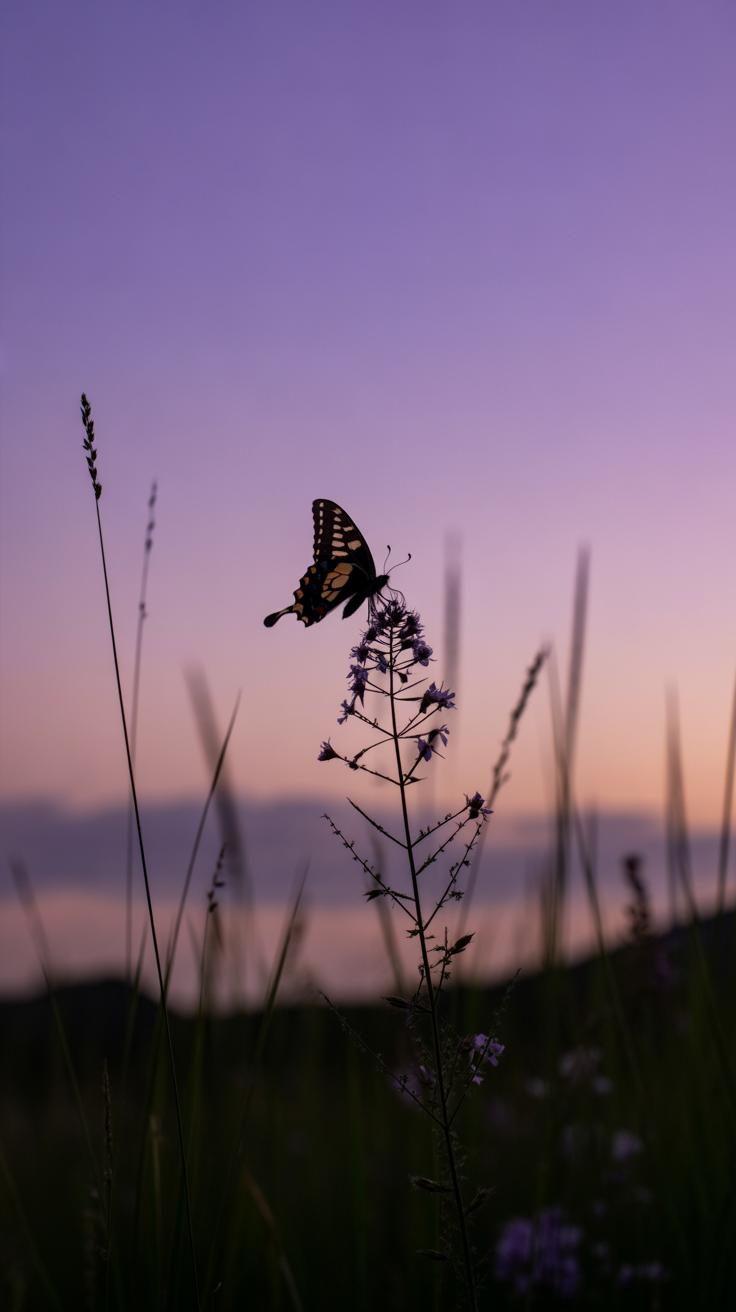
Ecological Role
Swallowtail butterflies help plants grow by moving pollen from flower to flower. This makes many fruits, vegetables, and wildflowers possible. Their work supports the food we eat and the natural beauty around us.
These butterflies also serve as food for other animals like birds, spiders, and small mammals. Their presence keeps the food web balanced.
Without swallowtails, some plants may not reproduce well, and animals relying on them for food might struggle. Have you noticed how butterflies brighten gardens? They also keep ecosystems healthy.
Conservation Actions
Protecting swallowtail butterflies starts with caring for their habitats. You can plant native host plants like parsley, fennel, or milkweed, which caterpillars feed on. This provides them places to lay eggs and grow.
Reducing pesticide use in your yard or community helps too. Chemicals can harm butterflies and their food sources.
Joining local butterfly counts or habitat restoration projects connects you to ongoing conservation efforts. Have you considered creating a small butterfly garden? Even small actions add up to bigger changes for swallowtail survival.
Conclusions
You have now learned how to identify swallowtail butterflies by their size, shape, and colors. You understand the special features of their caterpillars and their forked wings that give the family its name. These butterflies hold an important place in nature, often found in diverse habitats from tropical forests to mountain meadows. Recognizing the different subfamilies and their traits helps you appreciate their adaptations and diversity. Identifying the butterflies you see helps support butterfly watching and conservation efforts.
By understanding swallowtail butterflies, you can notice their role in ecosystems and enjoy observing them in your surroundings. You now know facts about their appearance, behavior, and how they defend themselves from threats. As you observe these butterflies, you may ask yourself about their life cycle and the plants they depend on. This guide provides a foundation to explore more in the future. Begin observing swallowtails with confidence, and share your knowledge to protect their natural habitats.


